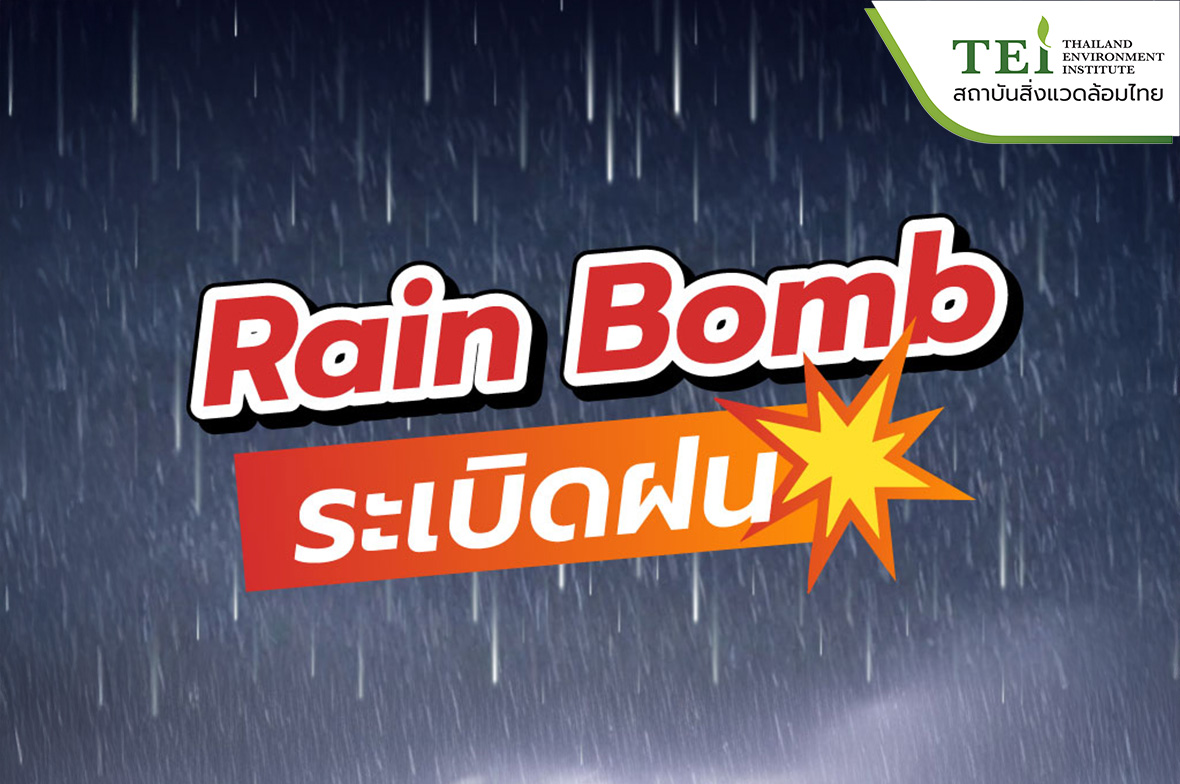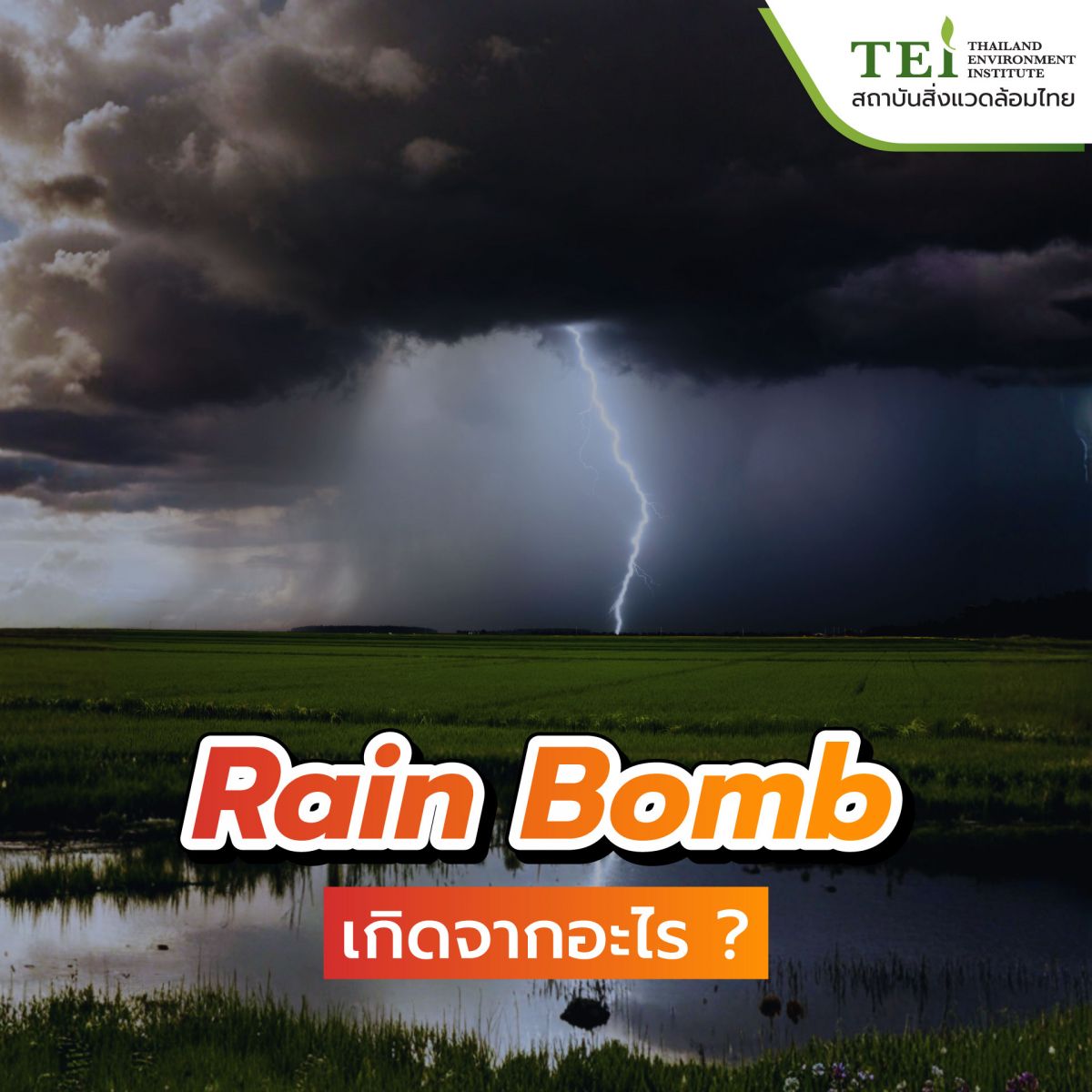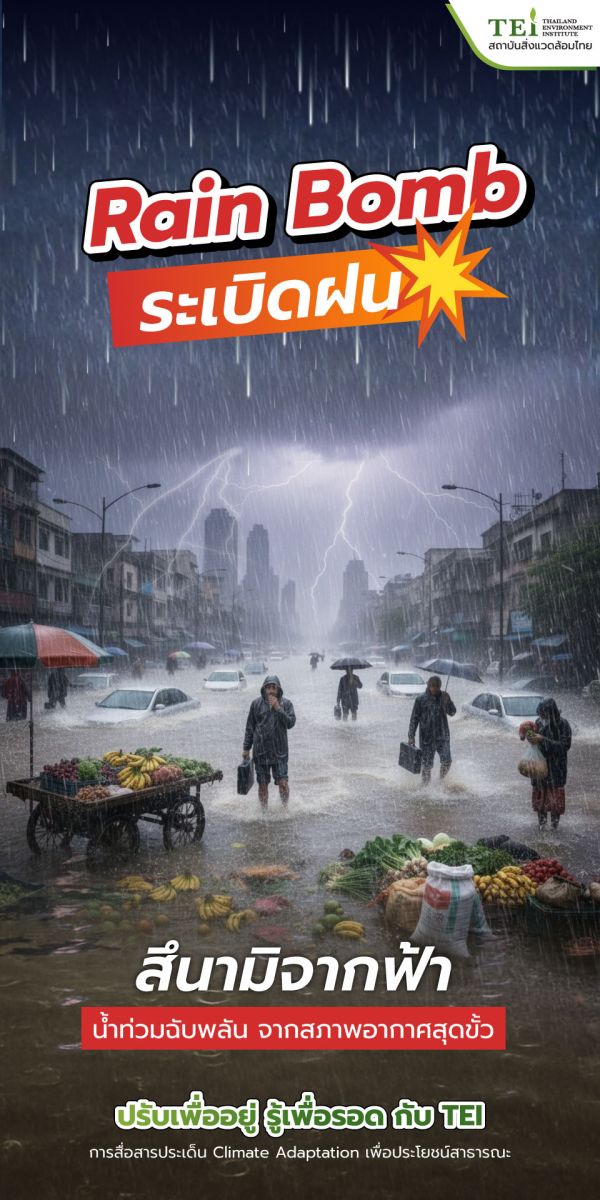
Thematic Areas: Climate Adaptation
"Rain Bomb" is a phenomenon striking fear globally. It is an extreme weather disaster likened to a "tsunami from the sky," which is becoming demonstrably more intense, frequent, and unpredictable.

A Rain Bomb is not the continuous, seasonal rain we are accustomed to. Instead, it "slams" down all at once with incredible intensity. This is a shocking impact of 'Climate Change,' or Global Boiling, which causes the air to hold higher humidity and more water mass. When this massive amount of water falls, it is more severe than normal.
Dr. Panu Traiwet, an assistant professor at the Department of Earth Sciences, Kasetsart University, explains that technically, a "Rain Bomb" is officially known as a Downdraft or Microburst. This refers to a strong current of air flowing down to the ground and then spreading out horizontally from the center.
The severity of a Rain Bomb lies in the massive volume of rain (potentially 200-400 millimeters) falling in just a few hours. This results in flash floods, mudslides, and forest runoff.
The most dangerous aspect is its difficulty to predict in advance, making it hard for local populations to prepare.
In Thailand: We saw clear examples in the 2024 flash floods in the Northern (Chiang Rai, Chiang Mai) and Southern (Chumphon, Ranong, etc.) regions, affecting over 43,595 households. This also includes acute urban flooding in cities like Chiang Mai and Bangkok, where drainage systems were overwhelmed, causing significant property damage and traffic chaos.
Globally: In Valencia, Spain, the region recently faced its most severe flooding in 50 years, with over 65 fatalities. Meanwhile, the Climate Risk Index 2025 report confirms that extreme weather disasters (especially floods) affected over 765,000 people globally (from 1993-2022), causing immense economic and human loss.
The Thailand Environment Institute (TEI) recognizes the "Rain Bomb" issue because it is a clear warning sign that "old rainfall patterns have ended." We all must understand the risks from the sky. Our only path to survival is ‘Climate Adaptation’ to live with the coming extreme weather volatility that may cause severe damage. TEI is therefore committed to prioritizing communication on Climate Adaptation for the public good.
TEI recommends the following adaptation guidelines at the Individual, City, and National levels to understand the risks of a Rain Bomb:
Closely follow news, alerts, and forecasts from the Meteorological Department to prepare for sudden heavy rain and floods.
Prepare flood prevention equipment, such as home flood barriers, sandbags, and automatic circuit breakers.
Avoid staying near large trees, billboards, or structures that could collapse during high winds and heavy rain.
Understand the preliminary warning signs of a Rain Bomb (e.g., hot, humid air followed by large thunderheads and a rapid, cool wind) to seek shelter immediately.
Develop urban and community drainage systems capable of handling heavy rainfall in short periods, such as retention ponds and large-scale drainage pipes.
Promote the use of Green Infrastructure, such as public parks, water retention areas (bioswales), and green roofs, to reduce surface runoff into the drainage system.
Establish response plans and train residents in high-risk flash flood areas to be prepared and minimize damage when an event occurs.
Create public-private partnerships for sustainable water management and global warming reduction projects.
Develop and update national water management and urban planning policies that account for climate change, such as controlling land use in flood-prone areas.
Promote inter-agency cooperation for high-accuracy surveillance and early warning systems.
Support research and development of technology for weather forecasting, heavy rain detection, and modern warning systems.
Push national and regional policies and implement measures to reduce greenhouse gas emissions, adhering to the principles of sustainable development.

The Thailand Environment Institute (TEI) emphasizes that responding to Rain Bombs in this era of extreme climate change is not a choice but a necessity for survival. This is the first step in prevention, guided by the principle 'Adapt to Live, Know to Survive,' to build lasting resilience for Thai society against the impacts of Climate Change.

Share: